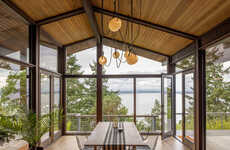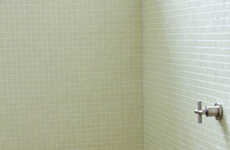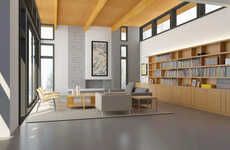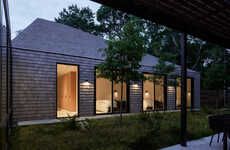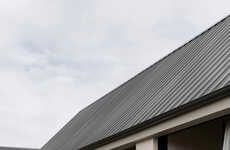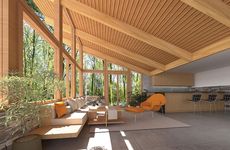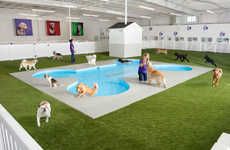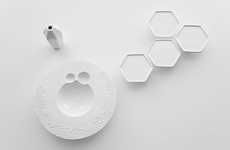
The Architecture of American Houses Looks at the Change in Exterior Design
References: Pop & mentalfloss
The design of American houses has changed significantly from the 1600s to today and this beautifully laid out chart by Pop Chart Lab elegantly chronicles these stylistic changes through the ages. The Architecture of American Houses infographic is an ideal read for anyone interested in design and building construction.
Throughout The Architecture of American Houses beautifully catalogs the various periods of design from the early 1600s to today. The chart divided up by stylistic periods moving from the Colonial Period where influences from England, France and Spain are noticeable to today where the Neo-Eclectic period reigns including homes like the McMansions and standard Victorian styles. This chart highlights how themes in design are continuously reoccurring and self-referencing even in today's age when the designs tend to be more modern and clean-cut.
Throughout The Architecture of American Houses beautifully catalogs the various periods of design from the early 1600s to today. The chart divided up by stylistic periods moving from the Colonial Period where influences from England, France and Spain are noticeable to today where the Neo-Eclectic period reigns including homes like the McMansions and standard Victorian styles. This chart highlights how themes in design are continuously reoccurring and self-referencing even in today's age when the designs tend to be more modern and clean-cut.
Trend Themes
1. Evolution-of-house-design - Opportunity for architects and designers to reimagine and innovate on traditional house designs by incorporating modern elements and materials.
2. Influence-of-stylistic-periods - Opportunity for interior decorators and home furnishing companies to create products that match the aesthetics of different stylistic periods, catering to consumers who desire a specific historical look in their homes.
3. Sustainable-and-modern-house-design - Opportunity for construction firms and architects to develop sustainable and energy-efficient house designs while incorporating modern elements, catering to eco-conscious consumers.
Industry Implications
1. Architecture - Disruptive innovation opportunity for architects to blend historic design elements with modern techniques and materials, creating unique and visually appealing homes.
2. Interior Decorating - Disruptive innovation opportunity for interior decorators to source and create furniture, fabrics, and accessories that reflect different historical periods, providing customers with a curated historical experience in their homes.
3. Construction - Disruptive innovation opportunity for construction companies to incorporate sustainable and energy-efficient practices into their house-building processes, meeting the demands of environmentally conscious consumers.
6
Score
Popularity
Activity
Freshness


